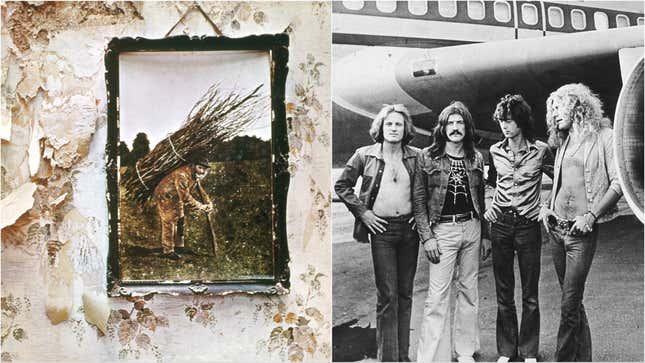
Here’s a little quiz for your Wednesday afternoon: do you know the name Spencer Elden? What about Keithroy Yearwood, John Button, or Brian Cannon and Sean Rowley? If you guessed that all of these somewhat anonymous men have adorned the covers of classic albums, you’d be correct. (The above are pictured on Nirvana’s Nevermind, The Notorious B.I.G.’s Ready To Die, The Cure’s Standing On A Beach, and Oasis’ (What’s The Story) Morning Glory? respectively.)
Now, after 52 years and a little academic investigating, a thatcher named Lot Long joins that illustrious crowd. Fans of Led Zeppelin—or anyone who’s ever slow-danced to “Stairway To Heaven” in a sweaty middle school gym—should recognize him immediately as the man with the hunched back and bundle of sticks on the cover of Led Zeppelin’s untitled fourth album, commonly known as Led Zeppelin IV. While the story of how the band chose the photo has been known for years now (Robert Plant and Jimmy Page were struck by a colorized version they saw at an antique shop in England), the actual identity of the man has been a mystery since the record’s release in 1971.
Not anymore, thanks to a researcher named Brian Edwards. According to a report from The New York Times, Edwards stumbled on the photo while browsing online auction houses for materials that might be relevant to his work. It was in a Victorian photo album inscribed “Reminiscences of a visit to Shaftesbury... a present to Auntie from Ernest” that he saw the recognizable figure. “There was something familiar about it straight away,” he told the publication.
Using information from the inscription, Edwards was able to determine that the photographer who had captured the image was a man named Ernest Howard Farmer. Further research revealed that the man himself was Lot Long, a thatcher from the small English town of Wiltshire, who lived from 1823 to 1893 (per The Guardian).
We still don’t know how Long’s photo came to be colorized or what happened to that print, but if you want to see the original image, it will be on display in England’s Wiltshire Museum spring and summer of next year.